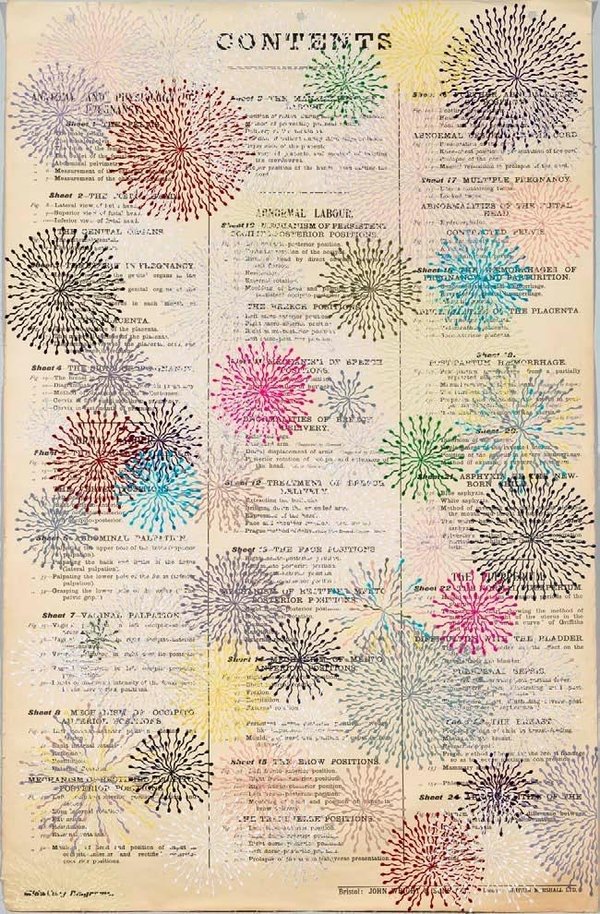Bharti Kher
dal 18/3/2010 al 14/5/2010
Segnalato da
18/3/2010
Bharti Kher
Hauser & Wirth, London
In her art, Kher gives form to the slightly strange and slightly awkward encounters with the daily rituals of life. Her vision makes the banal wondrous and the quotidian unusual, sometimes even disturbing. Her use of found objects, such as mirrors or furniture, is informed by her own position as an artist located between geographic and social milieus.

Hauser & Wirth is pleased to announce Bharti Kher’s debut solo exhibition at our London gallery. In her art, Kher
gives form to the slightly strange and slightly awkward encounters with the daily rituals of life. Her vision makes
the banal wondrous and the quotidian unusual, sometimes even disturbing. Her use of found objects, such as
mirrors or furniture, is informed by her own position as an artist located between geographic and social milieus.
Her way of working is exploratory: surveying, looking, collecting, and transforming. By bringing to attention the
overlooked world with its everyday acts, such as applying the bindi in Indian culture, confessing as a ritual or
looking at oneself in a mirror, and then re-assessing their meaning, Kher’s work repositions the viewer’s relation-
ship with the object.
An arcane symbol of fertility, the contemporary stick-on
bindi is a popular cosmetic device available in different
shapes and colours and is an integral part of Kher’s œuvre.
Exploiting their cultural and aesthetic dualisms, Kher uses
bindis as an epidermal filter to transform objects. As shim-
mering signs in the form of waves, constellations, and
spirals, Kher’s bindis mediate between codes and symbols
and the ritual marking of time.
In the main gallery will be Confess, a room whose inte-
rior surfaces are animated by oculi-like feminine bindis,
providing a boisterous, almost pagan, counterpoint to the
hushed rituals of the confessional. The single light bulb
hanging from the ceiling brings with it images of forced
confessions in prison cells. The claustrophobia of the do-
mestic realm, a persistent theme in Kher’s work, finds par-
allels in the staged decorum of the church with cupboards
that whisper secrets that oscillate between truth and lies.
In the same space, a motorised rocking horse is trans-
formed into a unicorn, its horn marking the arc of time.
A series of medical charts veiled by a diaphanous skin of
bindis lines the walls of the American Room. In this piece,
Kher plays with the paradoxical nature of the sperm-
shaped bindi, at once masculine and feminine, mainstream
and esoteric, enduring and ephemeral. Multitudes of these
markers provide a psychic filter to the medical charts by
drawing our attention to the often painful and unpredict-
able realities of birthing and the awkwardness of dealing
with abnormality both psychologically and genetically.
Kher’s fascination with the interiority of things, from
the sanctuary of a private space to cross-sections of a
birthing body, brings her unfolding process to the heav-
ily contoured form of a mountain surgically split along a
fault line revealing dark, smooth surfaces. Entitled Moving
Mountains, the sculpture suggests the impermanence of
seemingly immutable objects and the potential of interior
rhizomatic space to challenge hierarchic thought.
The artist’s metaphysical explorations are made palpable
by Sing. A type of standing bell, the singing bowl is used
to induce meditation and support chanting in Tantric Bud-
dhism. Replacing the monk, a mechanical rod powered
by a visible motor rubs the mallet around the rim of the
bowl to produce a continuous ‘singing’ sound. By plac-
ing the bowl in the vault (the gallery is housed in a bank
designed by the architect of New Delhi, Edwin Lutyens),
Kher initiates a dialogue between metaphysical and mate-
rial pursuits, absence and presence, while simultaneously
marking a specific historical context.
Choleric, phlegmatic, melancholic, sanguine, Kher’s new
work to be shown in Southwood Garden, St. James’ Park,
bristles with contorted mask-like faces and tentacles,
looming with the spectacle of a woman impaled on one
of her arms. In a clever inversion of the creation myth
which begins with the churning of a sacred mountain
by a serpent, Kher offers a quid pro quo of creation and
sacrifice. The sculpture documents a terminal moment, an
infernal grotesque form of a Kali goddess who represents
the dissolution of an era where all karma and ego end.
Bharti Kher was born in London, England in 1969 and lives and works in New Delhi, India. Kher’s work has been fea-
tured in major solo exhibitions such as ‘Virus’ at the Baltic Centre for Contemporary Art in Gateshead, England (2008),
and numerous group exhibitions including the Serpentine Gallery’s travelling exhibition, ‘Indian Highway’ (2008), London;
‘Where in the World’ at the Devi Art Foundation, New Delhi (2008); and ‘Chalo! India: A New Era of Indian Art’ at the Essl
Museum, Klosterneuberg, Austria (2009). Forthcoming exhibitions include a three-person show at Kunstmuseum Thun,
Switzerland and ‘The Empire Strikes Back: Indian Art Today’ at The Saatchi Gallery, London.
Press Contact Catherine Mason
catherine@suttonpr.com
Kristina McLean
kristina@suttonpr.com
+44 (0)20 7183 3577
Image: Bharti Kher, Not yet titled, Bindis on paper , 2010
Opening Friday 19 March, 6 - 8pm
Hauser & Wirth
196A Piccadilly, London
Gallery hours: Tuesday to Saturday, 10 am – 6 pm
free admission



